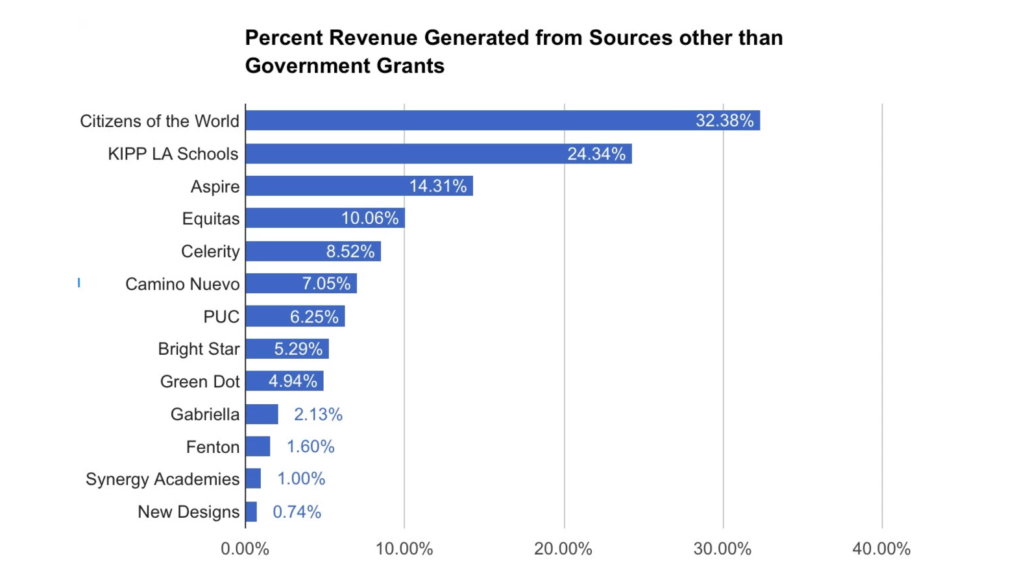
 I was surprised to see that KIPP is not king when it comes to private grants. In 2015, Citizens of the World raised a whopping 32 percent of its revenue through private grants. KIPP was not far behind raising almost 25 percent of their revenue through private means. But as you go down the list, you see major charter players, such as Green Dot and PUC raise far less (as a percent) from private sources. This is not to say that they spend any less per student—in fact Green Dot’s per pupil revenue appears to be higher than KIPP’s, but it says that the source of the revenue is clearly different.
I was surprised to see that KIPP is not king when it comes to private grants. In 2015, Citizens of the World raised a whopping 32 percent of its revenue through private grants. KIPP was not far behind raising almost 25 percent of their revenue through private means. But as you go down the list, you see major charter players, such as Green Dot and PUC raise far less (as a percent) from private sources. This is not to say that they spend any less per student—in fact Green Dot’s per pupil revenue appears to be higher than KIPP’s, but it says that the source of the revenue is clearly different.
Benjamin Feinberg is an eighth-grade math teacher at Luther Burbank Middle School. After school, he is a MESA advisor and coaches students to run the Los Angeles Marathon with Students Run Los Angeles. He has taught in charter schools and public schools during his eight years working in education. He has a master's in urban education from Loyola Marymount University.
If you have a child with disabilities, you’re not alone: According to the latest data, over 7 million American schoolchildren — 14% of all students ages 3-21 — are classified as eligible for special...
The fight for educational equity has never been just about schools. The real North Star for this work is providing opportunities for each child to thrive into adulthood. This means that our advocacy...
The story you tell yourself about your own math ability tends to become true. This isn’t some Oprah aphorism about attracting what you want from the universe. Well, I guess it kind of is, but...
Your donations support the voices who challenge decision makers to provide the learning opportunities all children need to thrive.
Ed Post is the flagship website platform of brightbeam, a 501(c3) network of education activists and influencers demanding a better education and a brighter future for every child.
© 2020–2024 brightbeam. All rights reserved.